Guaranteed student placement. Join the Best Python Training Institute in Delhi. Python Training Institute in Delhi With Python Training, one can offer certification training in Delhi at a very reasonable fee. A highly paid salary in all sectors in Python programming.
Table of content:
step#1 Why should you join Python Training Institute in Delhi?
step #2 Why should you choose Python Training Institute in Delhi?
step #3 BEST Python
Programming Certification Course Training
Institutes in Delhi
step #4 Tips to choose the best Python Training institute in Delhi.
step #5 How to choose Python
as Programming Language Training
Institute in Delhi ?
step #6 Three reasons why to go for the Python training in Delhi.
step # 7 What is the Python
training and course fee and duration in
Delhi?
step #8 Can I learn Python
at the training institute in Delhi
for free?
step #9 What is the average course fee for Python Training Institute in Delhi?
step #10 How to find Coaching Classes Near Python Training Institute in Delhi.
step #11 Which Python
certification course training institute
is conducted in Delhi?
step #12 How to find the Python Training Institute in Delhi.
step #13 How to learn Python
at Language Training Institutes in Delhi?
step #14 What is
the best course description for Python?
step #15 Faq
step #16 How does the Python
Training Institute in Delhi help in getting a good job?
step #17 How to do the certification after Python Training Institute in Delhi?
step #18 What kind of projects are involved in the Python Training Institute in Delhi?
step #19 How to contact Python Training Institute in Delhi?
step #20 Which is the best Python training institute in Delhi?
step #21 Python job opportunities in Delhi.
step #22 What is the Python web developer’s fresher job
salary in Delhi?
step #23 What will be the job roles and responsibilities
in python django developer?
step #24 Where can I find Python web development jobs?
step #25 conclusion :
step #1 Why should you join Python Training Institute in Delhi?
Python training is in
demand these days, the best institute in Delhi is Python Training Institute in Delhi. SASVBA is a top institute which provides online and offline python training institute Delhi. Python
100% job placement track record.
step #2 Why should you choose Python Training Institute in Delhi?
In today's time, the work
of collecting data is done in every department, and it has to be analyzed, this
is done through Python software. This is a python
training institute in Delhi. The same salary package starts as a fresher,
which is 8 lakhs. The real-time project training is provided in SASVBA.
step #3 BEST Python
Programming Certification Course Training
Institutes in Delhi
In today's time Python
class training is given in Delhi in which a certificate is also given, it has
100% placement track record, here children get at least 5 lakh to 15 lakh
salary, which is in good company and soon it's about to come. Their salary may
go up to 30 lakhs in the near future, you can also take classes like Python Training Institute in Delhi. SASVBA
step #4 Tips to choose the best Python Training institute in Delhi.
·
While taking the
python training, we must keep in mind that the institute has instructors
teaching both online and offline. After taking the course, students go for an
interview, then it is resumed written test interview communication.
·
Keeping all these
things in mind, we should join Python
Training Institute in any institute of Delhi.
SASVBA provides all these things, and from here a student gets established
in a good company.
step #5 How to
choose Python as Programming
Language Training Institute
in Delhi ?
·
Nowadays, Python
programming is in great demand, it has a lot of profiles like backend and
frontend full stack. To learn all this, we need a basic program, training in
Delhi. Before choosing any institute, we need to know that all these things
will happen.
·
HTML CSS
JavaScript Curie Programming like AngularJS, a real-time project is being done,
interview preparation is underway, a company is coming up, the salary is there,
we don't know.
·
Students should
also participate in the training that is given in Delhi, and the track record
here is very good. They work in a good company, they come and take a salary,
they are students of this institute in Delhi.
·
You can take
training from SASVBA. You should take Pythontraining from the institute in Delhi
from SASVBA.
step #6 Three reasons why to go for the Python training in Delhi.
·
The first reason is that in today's time with
Python programming, you can get a job anywhere, get a job quickly, get a good
salary, and have a secure career. Yes, you get more job opportunities and get a
good salary..
·
The second reason is that nowadays artificial
intelligence is used a lot, it is used in industry, python is used in
artificial intelligence.
·
Third reason is that data is collected in
companies, it has to be analyzed, it uses things like Python, Machine Learning,
Data Science, R-Programming. For this you can do a training in Delhi where
other kids are engaged in good companies and can get a salary package. You can
make your career from Python Training
Institute in Delhi, which offers SASVBA.
step #7 What is the Python
training and course fee and duration in
Delhi?
Python's training ranges
from 3 months to 6 months, its fee ranges from 20 thousand to 30 thousand. We
should take training from where the placement facility is there,
SASVBA
provides all these facilities in its training institute. Many students take Python
training from Delhi institute and work well. Many students take from the Python
training institute in Delhi and are in a very good company, their salary
increase is good.
step #8 Can I learn Python
at the training institute in Delhi
for free?
In today's time, online classes of Python are given for
free, you can take classes of Python programming on many sites on the Internet,
if you want to do well, you can get a good job by taking Python's training institute in Delhi. is SASVBA
step #9 What is the average course fee for Python Training Institute in Delhi?
Institutes have their own different charges. When you
search Python Programming Training Institute in Delhi, and you
talk, it can be between 12000 to 25000, on searching Python Training Institute in Delhi, you can inquire anywhere.
Everyone's fees are different. SASVBA is an institute which guarantees jobs at a reasonable price.
step #10 How to find Coaching Classes Near Python
Training Institute in Delhi.
Where is Python training near me by going to Google? You
can find out further and go there to inquire. There is an institute in Delhi
which is SASVBA, which provides
training in Python, guarantees a job, provides material, provides real-time
projects. You are here. You can take a python
training institute in Delhi and get an opportunity to grow further.
step #11 Which Python
certification course training
institute is conducted in Delhi?
There are many Python training certification centers in
Delhi. The first Python training is taken in Delhi. After that, after that you
have a test, after clearing the test, you get a score, after passing it, you
get a certificate, you can do Python
training.
You can get opportunities for yourself in the future by
taking it from the institute in Delhi.
Python training with SASVBA.
step #12 How to find the Python Training Institute in
Delhi.
At present, there has been a lot of demand for python
training in which the salary is also good, and the job is also available
quickly. You can go to a python training
institute and take it in Delhi. SASVBA
step #13 How to learn Python at Language Training
Institutes in Delhi?
·
efore you can even get a program to work on the
computer, it needs to receive the right code to make it work.
·
There are several options for code creation that
a computer tech can choose, including Java, C++ and Python.
·
Here we will learn a bit about Python and why it
is often preferred over other programming options.
·
Before you are able to start using Python to
take over your programming needs, it is important to start learning more about
it and all of the great benefits you will receive when using this program.
·
Python is a high-level programming tool, which
means that it is easy to use and read, even as a beginner.
·
The philosophy of this code language is simple
enough to use.
·
Some of the features that you may like with
Python include an elegant syntax which will make the programs so easy to read.
·
Python is really interactive.
· You won't have to pay anything to download and use Python in your own life.
·
Even though Python is a simple programming
language, it does contain advanced features like listing comprehensions and
generators
step #14 What is
the best course description for Python?
|
GETTING STARTED |
|
·
Setting Up Your Programming Environment |
|
·
Python Versions |
|
·
Running Snippets of Python Code |
|
·
About the Sublime Text Editor |
|
·
Python on Different Operating Systems |
|
·
Python on
Windows |
|
·
Python on
mac OS |
|
·
Python on Linux |
|
·
Running a
Hello World Program |
|
·
Configuring Sublime Text to Use the Correct
Python Version |
|
·
Running hello_world.py |
|
·
Troubleshooting |
|
·
Running Python Programs from a Terminal |
|
VARIABLES AND SIMPLE DATA TYPES |
|
·
What Really Happens When You Run
hello_world.py |
|
·
Variables |
|
·
Naming and
Using Variables |
|
·
Avoiding
Name Errors When Using Variables |
|
·
Variables
Are Labels |
|
Strings |
|
·
Changing
Case in a String with Methods |
|
·
Using Variables
in Strings |
|
·
Adding Whitespace to Strings with Tabs or
Newlines |
|
·
Stripping
Whitespace |
|
·
Avoiding Syntax Errors with Strings |
|
Numbers |
|
·
Integers |
|
·
Floats |
|
·
Integers and Floats |
|
·
Underscores in Numbers |
|
·
Multiple Assignment |
|
·
Constants |
|
·
Comments |
|
INTRODUCING LISTS |
|
·
What Is a List? |
|
·
Accessing Elements in a List |
|
·
Index
Positions Start at 0, Not 1 |
|
·
Using Individual Values from a List |
|
·
Changing, Adding, and Removing Elements |
|
·
Modifying Elements in a List |
|
·
Adding Elements to a List |
|
·
Removing Elements from a List |
|
·
Organizing a
List |
|
·
Sorting a List Permanently with the sort()
Method |
|
·
Sorting a List Temporarily with the sorted()
Function |
|
·
Printing a List in Reverse Order |
|
·
Finding the Length of a List |
|
WORKING WITH LISTS |
|
·
Looping Through an Entire List |
|
·
A Closer
Look at Looping |
|
·
Doing More
Work Within a for Loop |
|
·
Doing Something After a for Loop |
|
·
Avoiding Indentation Errors |
|
·
Forgetting to Indent |
|
·
Forgetting to Indent Additional Lines |
|
·
Indenting Unnecessarily |
|
·
Indenting Unnecessarily After the Loop |
|
·
Forgetting the Colon |
|
·
Making Numerical Lists |
|
·
Using the range() Function |
|
·
Using range() to Make a List of Numbers |
|
·
Simple Statistics with a List of Numbers |
|
·
List Comprehensions |
|
·
Working with Part of a List |
|
·
Slicing a List |
|
·
Looping Through a Slice |
|
·
Copying a List |
|
·
Tuples |
|
·
Defining a
Tuple |
|
·
Looping Through All Values in a Tuple |
|
·
Writing over
a Tuple |
|
·
Styling Your
Code |
|
·
The Style Guide |
|
·
Indentation |
|
·
Line Length |
|
·
Blank Lines |
|
·
Other Style Guidelines |
|
IF STATEMENTS |
|
·
Conditional Tests |
|
·
Checking for Equality |
|
·
Ignoring Case When Checking for Equality |
|
·
Checking for Inequality |
|
·
Numerical Comparisons |
|
·
Checking Multiple Conditions |
|
·
Checking Whether a Value Is in a List |
|
·
Checking Whether a Value Is Not in a List |
|
·
if Statements |
|
·
Simple if
Statements |
|
·
if-else Statements |
|
·
The
if-elif-else Chain |
|
·
Using Multiple elif Blocks |
|
·
Omitting the else Block |
|
·
Using if
Statements with Lists |
|
·
Checking for Special Items |
|
·
Checking That a List Is Not Empty |
|
·
Using Multiple Lists |
|
·
Styling Your
if Statements |
|
DICTIONARIES |
|
·
Working with Dictionaries |
|
·
Accessing Values in a Dictionary |
|
·
Adding New Key-Value Pairs |
|
·
Starting with an Empty Dictionary |
|
·
Modifying Values in a Dictionary |
|
·
Removing
Key-Value Pairs |
|
·
A Dictionary of Similar Objects |
|
·
Using get() to Access Values |
|
·
Looping Through a Dictionary |
|
·
Looping Through All Key-Value Pairs |
|
·
Looping Through All the Keys in a Dictionary |
|
·
Looping Through a Dictionary’s Keys in a
Particular Order |
|
·
Looping Through All Values in a Dictionary |
|
·
Nesting |
|
·
A List of
Dictionaries |
|
·
A List in a
Dictionary |
|
·
A Dictionary
in a Dictionary |
|
GETTING STARTED
WITH DJANGO |
|
·
Setting Up a Project |
|
·
Writing a
Spec |
|
·
Creating a Virtual Environment |
|
·
Activating
the Virtual Environment |
|
·
Installing Django |
|
·
Creating a Project in Django |
|
·
Creating the Database |
|
·
Starting an App |
|
·
Defining Models |
|
·
Activating Models |
|
·
The Django Admin Site |
|
·
Defining the Entry Model |
|
·
Migrating the Entry Model |
|
·
Registering
Entry with the Admin Site |
|
·
The Django Shell |
|
·
Making Pages: The Learning Log Home Page |
|
·
Mapping a
URL |
|
·
Writing a
View |
|
·
Writing a Template |
|
·
Building
Additional Pages |
|
·
Template Inheritance |
|
USER ACCOUNTS |
|
·
Allowing Users to Enter Data |
|
·
Adding New
Topics |
|
·
Adding New
Entries |
|
·
Editing Entries |
|
·
Setting Up User Accounts |
|
·
The users
App |
|
·
The Login Page |
|
·
Logging Out |
|
·
The Registration Page |
|
·
Allowing
Users to Own Their Data |
|
·
Restricting Access with @login_required |
|
·
Connecting Data to Certain Users |
|
·
Restricting Topics Access to Appropriate Users |
|
·
Protecting a User’s Topics |
|
·
Protecting the edit_entry Page |
|
·
Associating New Topics with the Current User |
|
STYLING AND DEPLOYING AN APP |
|
·
Styling Learning Log |
|
·
The
django-bootstrap4 App |
|
·
Using Bootstrap to Style Learning Log |
|
·
Modifying
base.html |
|
·
Styling the Home Page Using a Jumbotron |
|
·
Styling the Login Page |
|
·
Styling the Topics Page |
|
·
Styling the Entries on the Topic Page |
|
·
Deploying Learning Log |
|
·
Making a
Heroku Account |
|
·
Installing the Heroku CLI |
|
·
Installing Required Packages |
|
·
Creating a requirements.txt File |
|
·
Specifying the Python Runtime |
|
·
Modifying settings.py for Heroku |
|
·
Making a Procfile to Start Processes |
|
·
Using Git to Track the Project’s Files |
|
·
Pushing to Heroku |
|
·
Setting Up the Database on Heroku |
|
·
Refining the Heroku Deployment |
|
·
Securing the Live Project |
|
·
Committing and Pushing Changes |
|
·
Setting Environment Variables on Heroku |
|
·
Creating Custom Error Pages |
|
·
Ongoing
Development |
|
·
The SECRET_KEY Setting |
|
·
Deleting a Project on Heroku |
|
TEXT EDITORS AND
IDES |
|
·
Customizing
Sublime Text Settings |
|
·
Converting Tabs to Spaces |
|
·
Setting the
Line Length Indicator |
|
·
Indenting and Unindenting Code Blocks |
|
·
Commenting Out Blocks of Code |
|
·
Saving Your Configuration |
|
·
Further
Customizations |
|
·
Other Text
Editors and IDEs |
|
·
IDLE |
|
·
Geany |
|
·
Emacs and Vim |
|
·
Atom |
|
·
Visual
Studio Code |
|
·
PyCharm |
|
·
Jupyter Notebooks |
|
INSTALLATION AND TROUBLESHOOTING |
|
·
Python on
Windows |
|
·
Finding the Python Interpreter |
|
·
Adding Python to Your Path Variable |
|
·
Reinstalling Python |
|
·
Python on
macOS |
|
·
Installing Homebrew |
|
·
Installing Python |
|
·
Python on Linux |
|
·
Python Keywords and Built-in Functions |
|
·
Python Keywords |
|
·
Python Built-in Functions |
|
USING GIT FOR VERSION CONTROL |
|
·
Installing
Git |
|
·
Installing
Git on Windows |
|
·
Installing
Git on macOS |
|
·
Installing Git on Linux |
|
·
Configuring
Git |
|
·
Making a
Project |
|
·
Ignoring Files |
|
·
Initializing
a Repository |
|
·
Checking the Status |
|
·
Adding Files to the Repository |
|
·
Making a
Commit |
|
·
Checking the Log |
|
·
The Second Commit |
|
·
Reverting a
Change |
|
·
Checking Out Previous Commits |
|
·
Deleting the Repository |
Built-in Data Structures, Functions, and
Files
·
Python’s data structures are simple but
powerful. Mastering their use is a critical part
Of becoming a proficient Python
programmer.
Python Language Basics, IPython, and Jupyter
Developing muscle-memory for the commands is part of the
learning curve for anyone trying to work with data in a non-programming
environment.
The Python Interpreter
Running the
IPython Shell
Running the
Jupyter
·
It creates a file with the extension.ipynb. This
is a self-contained file format.
That contains all of the content
(including any evaluated code output) currently in the system.
·
notebook. These can be loaded and edited by
other Jupyter users. To load an existing
In the notebook, put the file in
the same directory where you started the notebook process.
Data Aggregation
and Group Operations
R programming language
coined the term
split-apply-combine for describing a group of operations. In the
First stage of the process, data contained in a pandas
object, whether a series,
Data‐Frame, or otherwise, is split into groups based on
one or more keys that you provide.
The splitting is performed on a particular axis of an
object.
For example, a Data Frame
Can be grouped on its rows (axis=0) or its columns
(axis=1).
Data Aggregation
Aggregations refer to any data transformation that
produces scalar values from
arrays. The preceding examples have used several of them,
including mean, count,
Min, and sum.
You may wonder what is going on when you invoke mean ()
on a
Group By object.
Example: Filling
Missing Values with Group-Specific Values
Modeling Libraries
in Python
Which library you use for developing models will depend
on the application. Many
Statistical problems can be solved by simpler techniques
like ordinary least squares.
Regression, while other problems may call for more
advanced machine learning.
methods.
Introduction to
statsmodels
The Python library for fitting many kinds of statistical
models, performing statistical tests, and data exploration and visualization.
Stats models contains more “classical” frequentist statistical methods, while
Bayesian methods and machine-learned models are found in other libraries. Some
kinds of models found in stats models include.
• Linear models, generalized linear models, and robust
linear models
• Linear mixed effects models
• Analysis of variance (ANOVA) methods
• Time series
processes and state space models
• Generalized method of moments
Estimating Time
Series Processes
Data Analysis
Examples
Data Cleaning and
Preparation
·
Data analysis and modeling, a significant amount
of time
The time is spent on data
preparation: loading, cleaning, transforming, and rearranging.
·
Such Tasks are often reported to take up 80% Or
more of an analyst’s time. Sometimes the
The way that data is stored in
files or databases is not in the right format for a particular.
task.
·
Many researchers choose to do ad hoc processing
of data from one form too.
Another using a general-purpose
programming language, like Python, Perl, R or Java,
·
Or Unix text-processing tools like sed or ask.
Fortunately, pandas, along with the
Built-in Python language
features provide you with a high-level, flexible, and fast set of set
Of tools to enable you to manipulate
data into the right form.
·
If you identify a type of data manipulation that
isn’t anywhere in this book or else‐
Where in the pandas library,
feel free to share your use case on one of the Python.
·
Mailing lists or on the pandas Git Hub site.
Indeed, much of the design and assembly is done.
The mentation of pandas has been
driven by the needs of real-world applications.
·
In this chapter I discuss tools for missing
data, duplicate data, string manipulation,
And some other analytical data
transformations.
Python built-in
string methods
Regular expression
methods
Partial listing of vector
zed string methods
merge function
arguments
Plotting and
Visualization
matplotlib is a desktop plotting package designed for
creating publication-quality plots. It was started by John Hunter in 2002 to
enable a MATLAB-like plotting interface in Python.
Simple plot with
three lines and legend
Bar Plots
Facet Grids and
Categorical Data
step #15 Faq
step #16 How does the Python Training Institute in Delhi help in getting a good job?
·
Python training is very much in trend these
days. Job Placement Interview Preparation Practical Section Seminars, after
taking training from a good institute, it all is provided.
·
This makes it easy to get a job, you can get a
part-time job and a full-time job. We do. You can prepare for it, it will give
you a good increase in your salary, which is what SASVBA offers. You can apply
for your job by taking the course in Delhi from Python Training Institute.
·
Get a good job, take Python training from the Institute
in Delhi.
step #17 How to do the certification after Python Training Institute in Delhi?
Python training is conducted by some institutes, it is an
exam in which you are given a number of certificates, on passing, you will get
a certificate in Delhi after taking a class from Python Training Institute in Delhi, which is conducted in the
institution.
step #18 What kind of projects are involved in the Python Training Institute in Delhi?
In today's time, there is a demand in the Python industry
in which the company's data is collected, after analysis, a result comes out,
and the company takes a decision and prepares its report. For this we need
training, for this there is an institute which offers training.
They do and have a project as Real Estate Hotel Industry
Mobile Coal Industry Education Industry Music Industry Airline Industry Hotel
Industry Mortal Industry Python is used in Python
Training Institute Delhi to get a good salary.
step #19 How to contact Python Training Institute in Delhi?
In today's time, all numbers are available on the net for
Python training and enquiry. If you search Python
Training Institute in Delhi, then many institutes will come in front of
you, you can talk about them by putting numbers on them. You can join a top
institute in Delhi that is SASVBA.
You can make your career by joining here, you can make good salary growth, a
secure career.
step #20 Which is the best
Python training institute in Delhi?
To find out which
institute is the best, how are the trainers teaching in the same institute, how
many are educated, where the job is done, how is the track record of the
institute,
how many children have been placed, company
partners, how much salary is available New materials real time project Come
prepare for the interview, help in giving interview, it gives you good salary,
you can take online offline classes in PythonTraining Institute Delhi, you can make your career SASVBA .
step #21 Python
job opportunities in Delhi.
·
Backend
·
Frontend
·
Full
stack
·
Software
Developer
·
Data
Science
·
Machine
Learning
·
App
Development
Software Analysis
has all the details which have all these profiles in which you will get job
opportunities if you take a python
training in the institute SASVBA
in Delhi. You will get this
facility.
step #22 What is
the Python web developer’s fresher job salary in Delhi?
In Python web development, the salary for fresher’s ranges from 500000 to 1000000, for people
above 5 years between 1000000 to 1500000, for the rest of the candidates it is
from 1500000 to 3000000.
It depends on the interview, and if someone's skill is
very good at his or her skill, he also takes more salary. If you take a Python web development training institute in Delhi, then you
can get a good salary because SASVBA
is a good organization.
step #23 What will
be the job roles and responsibilities in python django developer?
If you get your job by taking a python django training,
then its profile is that it is the backend. In this we have to see the
background security of the website, how many users have come, and that we have
to take full care of the security of the python web development.
We have to do a python
django course. Its training institute
is done in Delhi. The classes run in
the training institute of python django in Delhi. The classes are provided by SASVBA.
step #24 Where can
I find Python web development jobs?
Python classroom training institute in Delhi
- Experienced trainers
- Affordable fees
- Placement facility
- Feedback from past students
- Live project working experience
- complete practical training
- Placement classes
step #25 conclusion
:
Python project-based training is the most preferred course
in Delhi nowadays. Thus, SASVBA is available for helping candidates in
achieving their goal. That's why the Python
training institute should be done in
Delhi only if a placement is available, job security is available, back-end
support of SASVBA is available.














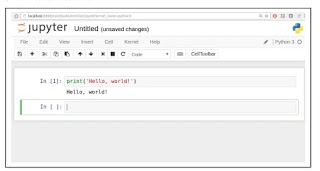

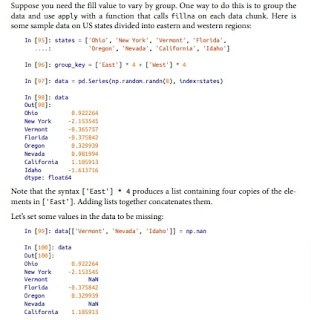
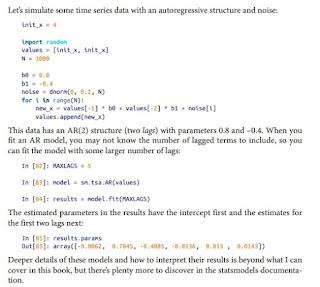
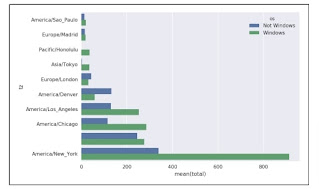
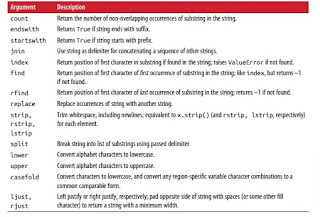
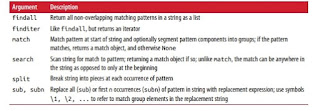
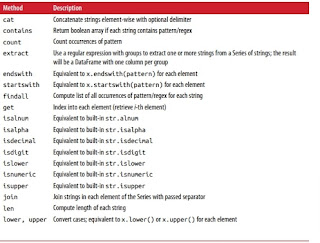

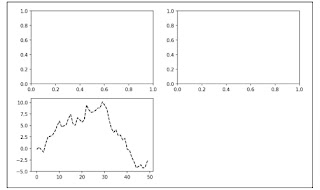


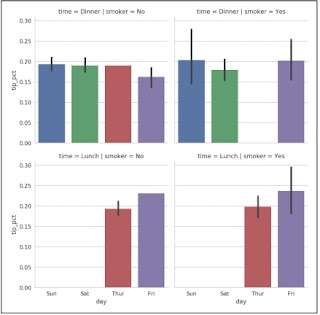


Comments
Post a Comment